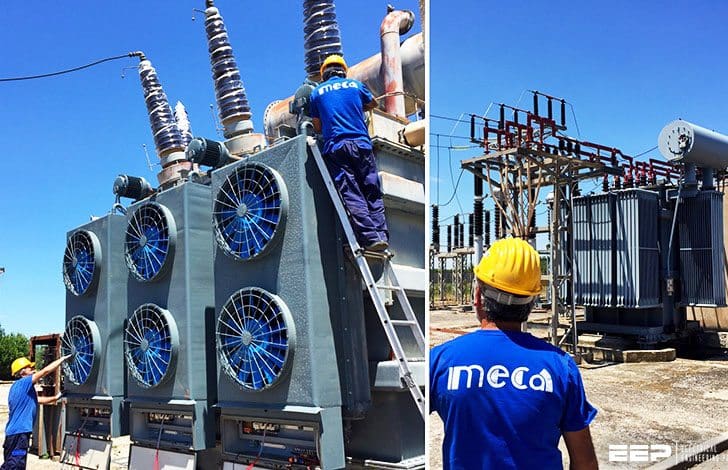Introduction
The main purpose of this research is to gather in one paper information about construction and maintenance of high voltage power transformers. There are included informations about condition monitoring techniques, maintenance techniques and also information about the degradation processes that happened in oil paper insulated transformers.

Energy losses
An ideal transformer would have no energy losses, and would be 100% efficient. In practical transformers energy is dissipated in the windings, core, and surrounding structures.
Larger transformers are generally more efficient, and those rated for electricity distribution usually perform better than 98%.
Experimental transformers using superconducting windings achieving efficiencies of 99.85%. While the increase in efficiency is small, when applied to large heavily-loaded transformers the annual savings in energy losses is significant.
A small transformer, such as a plug-in “wall-wart” or power adapter type used for low-power consumer electronics, may be no more than 85% efficient, with considerable loss even when not supplying any load. Though individual power loss is small, the aggregate losses from the very large number of such devices is coming under increased scrutiny.
Transformer losses are divided into losses in the windings, termed copper loss, and those in the magnetic circuit, termed iron loss. Losses in the transformer arise from:
Winding resistance
Current flowing through the windings causes resistive heating of the conductors. At higher frequencies, skin effect and proximity effect create additional winding resistance and losses.
Hysteresis losses
Each time the magnetic field is reversed, a small amount of energy is lost due to hysteresis within the core. For a given core material, the loss is proportional to the frequency, and is a function of the peak flux density to which it is subjected.
Eddy currents
Ferromagnetic materials are also good conductors, and a solid core made from such a material also constitutes a single short-circuited turn throughout its entire length. Eddy currents therefore circulate within the core in a plane normal to the flux, and are responsible for resistive heating of the core material.
The eddy current loss is a complex function of the square of supply frequency and inverse square of the material thickness.
Magnetostriction
Magnetic flux in a ferromagnetic material, such as the core, causes it to physically expand and contract slightly with each cycle of the magnetic field, an effect known as magnetostriction . This produces the buzzing sound commonly associated with transformers, and in turn causes losses due to frictional heating in susceptible cores.
Mechanical losses
In addition to magnetostriction, the alternating magnetic field causes fluctuating electromagnetic forces between the primary and secondary windings. These incite vibrations within nearby metalwork, adding to the buzzing noise, and consuming a small amount of power.
Stray losses
Leakage inductance is by itself lossless, since energy supplied to its magnetic fields is returned to the supply with the next half-cycle. However, any leakage flux that intercepts nearby conductive materials such as the transformer’s support structure will give rise to eddy currents and be converted to heat.
| Title: | Construction and Maintenance of High Voltage Power Transformers – Stamatios Vlachos |
| Format: | |
| Size: | 8.2 MB |
| Pages: | 51 |
| Download: | Right here | Video Courses | Membership | Download Updates |


